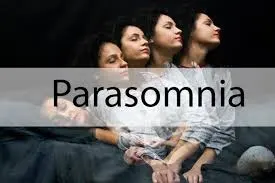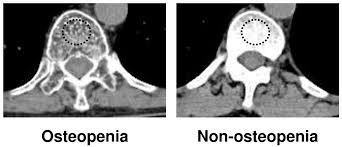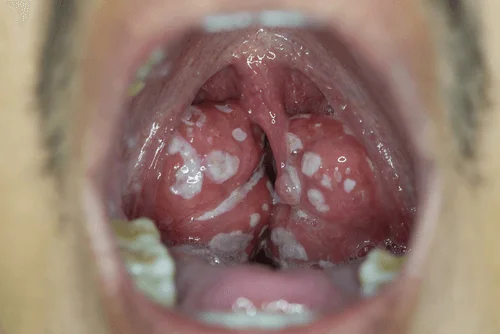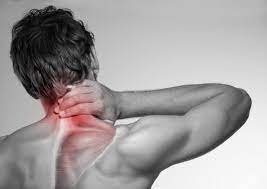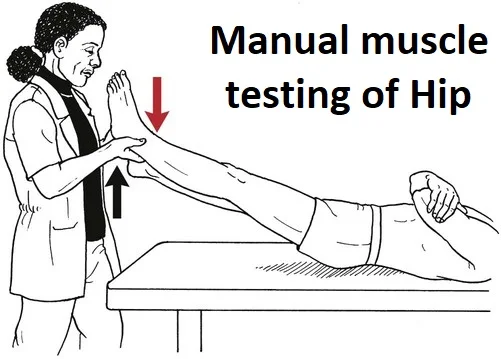Parasomnia
Table of Contents
What is Parasomnia?
Parasomnia is a group of sleep disorders in which there is an abnormal movement, behaviors, emotions, perceptions, or dreams during sleep. These are involuntary or unwanted events that occur during sleep, which can cause disruptions in sleep patterns and interfere with the quality of sleep.
If you experience parasomnia, you might act strangely when you’re sleeping, such as moving about or talking. You might appear to be awake to others, but you’re actually asleep. Usually, you don’t recall the event.
Although common, parasomnias can make it difficult to get a good night’s sleep. Other nearby individuals’ sleep may also be disturbed by your behavior.
Some parasomnias can also be harmful because they cause you to lose awareness of your surroundings. They may also have negative health impacts, such as stress on the mind.
Parasomnias can be treated, just like other sleep disorders. Continue reading to discover the types, causes, and treatments for parasomnias.
Types of Parasomnia
Some common types of parasomnias include sleepwalking, night terrors, sleep talking, REM sleep behavior disorder, sleep-related eating disorder, and sleep paralysis. These conditions can occur in both adults and children and may be caused by a variety of factors, such as genetics, underlying medical conditions, medications, or substance abuse.
While the symptoms of each parasomnia vary, these behaviors can be divided into three broad categories: NREM-related, REM-related, and “other.”
NREM-Related Parasomnias
The first three stages of the sleep cycle, collectively referred to as NREM sleep, are when NREM-related parasomnias take place.
Disorders of arousal are a term used to describe the most prevalent NREM-related parasomnias. These parasomnias are distinguished by bouts of partial awakening, limited responsiveness to outside attempts to guide the sleeper, and minimal awareness throughout the event.
Most individuals with arousal problems have little to no memory of their episodes.
Confusional arousals:
A sleeper who experiences a confusional arousal acts confused may sit up, and may even glance around, but they do not get out of bed.
Other behaviors include:
- slow speech
- poor memory
- crying
- slow reaction time
Teeth grinding:
In sleep bruxism, you grind your teeth while sleeping. These behaviors can cause:
- tooth pain or sensitivity
- jaw, face, or neck soreness
- earache-like pain
Sleepwalking:
People who get out of bed while still asleep and show little awareness of or receptivity to their surroundings are said to be sleepwalking. They might also sort clothes or engage in other activities.
Injuries can also result from sleepwalking if the sufferer stumbles or bumps into other things.
Night terrors:
Night terror sufferers frequently weep, scream, or make strange noises while they are asleep, and might be challenging to wake up. An episode of a night terror can last for a few minutes or up to 40 minutes.
Night terrors are also associated with:
- crying
- screaming
- fast heart rate
- sweating
- skin flushing
Sleep-related eating disorder
Binge eating and drinking while not experiencing REM sleep is a sleep-related eating problem. You could be fully or partially conscious.
Binge-eating episodes frequently occur repeatedly. Particular actions include:
eating and drinking quickly consuming uncommon meals (such as a stick of butter) or food pairings
ingesting poisonous food, such as raw flesh
Sleep-related sexual abnormal behaviors:
This parasomnia, also referred to as “sexsomnia,” is characterized by sexual activities like masturbation, initiating sexual contact, and making sexual noises when a person is asleep.
Sleep-related eating disorder, characterized by periods of disordered eating that occur after being awakened from sleep, is another prevalent NREM-related parasomnia. The majority of those who have this illness are only partially responsive during their eating episodes and have scant to no remembrance of what happened. Ingestion of poisonous substances, harm from cooking or food preparation, and physiological impacts of unhealthy or excessive eating are a few potential worries.
REM-Related Parasomnias
REM-related parasomnias happen when a person is in this period of sleep. The brain is very active, the eyes move swiftly, and muscles temporarily paralyze during typical REM sleep. The majority of dreams happen during REM sleep.
Muscle paralysis is one of the anomalies in REM sleep that people with REM-related parasomnias encounter. There are a number of typical parasomnias connected to REM.
REM sleep behavior disorder (RBD): During REM sleep, RBD is characterized by peculiar vocalizations or movements made in an effort to act out a dream. The actions often include self-defense and may involve striking, kicking, or uttering profanities. RBD is frequently observed in Parkinson’s disease patients.
Typical RBD actions consist of:
- grabbing
- punching
- shouting
- kicking
- jumping
Sleep paralysis: When falling asleep or waking up, people with sleep paralysis momentarily lose the ability to move their bodies. This could also be accompanied by hallucinations or a suffocating sensation. Although sleep paralysis is not harmful, it can cause anxiety or distress when trying to fall asleep.
Nightmare disorder: Everybody occasionally experiences unpleasant dreams. However, a diagnosis of nightmare disorder may be given to people who frequently have vivid nightmares that cause fatigue, distress, and other daytime impairments. Post-traumatic stress disorder (PTSD) sufferers frequently exhibit nightmare disorder.
Other Parasomnias
Parasomnias that fall under the “other” category include both NREM and REM sleep-related behaviors as well as those that can happen at any time between sleep and awake.
Exploding head syndrome: When affected individuals awaken, they either hear a loud boom or experience an explosion in their brain. Upon waking, they might also see an imagined flash of light. The person experiencing this sensation may wake up with lingering palpitations, fear, and worry. Some folks could have several episodes in a single night.
Sleep-related hallucinations: It may lead to hypnagogic hallucinations during sleep and hypnopompic hallucinations upon awakening. Vivid pictures, sounds, or other sensations may be included in the hallucinations. Sometimes the hallucinations are connected to sleep paralysis. In extreme circumstances, sleepers might get out of bed in an effort to get away from what they are going through.
Bedwetting: Bedwetting, often called sleep enuresis, is the involuntary urinating of a person while they are asleep. In young kids, bedwetting is quite common. It must happen at least twice a week for three months in a person who is 5 years old or older for it to be deemed parasomnia.
If you experience the signs of one or more parasomnias, speak with your doctor to find out about parasomnia treatment choices and parasomnia preventive strategies.
Parasomnia Causes
The reasons for parasomnia might be varied. There may be several triggers for the disease, including:
- stress
- anxiety
- depression
- PTSD
- substance use
- irregular sleep schedules, like shift work
- other sleep disorders, like insomnia
- sleep deprivation
- neurological conditions, like Parkinson’s disease
- genetics first-degree relative with a parasomnia
- restless legs syndrome (RLS)
- periodic limb movements
- sleep apnea
- insomnia
- chronic pain conditions
- mental health conditions
- certain medications, such as sedatives
- alcohol use disorder
- substance abuse (addiction) or withdrawal
Issues that disrupt sleep:
the incomplete transition from the stages of wakefulness to sleep.
sleep deprivation and irregular sleep-wake patterns (from jet lag or shift work).
Medicines include those that induce sleep (benzodiazepines: zolpidem), treat depression (amitriptyline, bupropion, paroxetine, mirtazapine), treat psychotic disorders (quetiapine, olanzapine), lower blood pressure (propranolol, metoprolol), treat seizures (topiramate), treat asthma and allergies (montelukast), and treat infections (fluoroquinolones).
Medical conditions that cause sleep disturbances include periodic limb movement disorder, obstructive sleep apnea, discomfort, narcolepsy, and sleep deprivation.
In children with parasomnias, the sleep-wake cycle is immature.
Other health issues:
- Fever.
Stress.
Alcohol or substance abuse.
Head injury.
Pregnancy or menstruation.
Genetics.
You are more prone to have parasomnias if your family has a history of them. - The sickness that causes inflammation, like encephalitis.
Depression, anxiety, and post-traumatic stress disorder are psychiatric disorders.
Parkinson’s disease, Lewy body dementia, stroke, multiple system atrophy, multiple sclerosis, brain tumors, migraines, and type 3 spinocerebellar ataxia are examples of neurological conditions.
Parasomnia in children
Children are more prone to insomnia than adults are. Children with neurological or psychiatric problems, such as epilepsy or ADHD, are most likely to experience it.
Parasomnia in children can also be brought on by factors like stress and sleep deprivation.
However, children frequently experience parasomnia due to their immature sleep–wake cycle. It follows that a mixed state of consciousness results from the underdevelopment of the boundaries between awake and sleep.
By adolescence, the majority of kids have outgrown it.
Children with parasomnia may cry and dread more than children without it. They could be reluctant to spend the night alone.
Keep in mind that if your youngster engages in unusual sleeping habits, it’s not on purpose. Instead of punishing them, concentrate on being supportive.
Encourage them to use the loo before night, for instance, if they wet the bed.
Parasomnia symptoms
In addition to strange sleeping habits, parasomnia might result in other symptoms. You could:
A confusing or foggy awakening
You awaken and wonder where you were because you can’t remember performing specific things.
Discover new cuts on your body, experience snoring issues, or experience lethargy or sleepiness during the day
Having daytime fatigue.
Discovering bruising and cuts on your body for which you cannot recall the reason.
Exhibiting gestures, facial expressions, vocalizations, or behaviors that you do not recall, as reported to you by your bed partner.
How are parasomnias diagnosed?
Your sleep medicine specialist will inquire about your and your sleeping partner’s sleep issues. Your medical background, family history, usage of alcohol, and any drug misuse will also be inquired about. Your current medicine usage will be questioned. Your bed partner could be asked to log your sleep events and keep a sleep journal for you.
Other sleep disorders tests include:
You’ll be watched as you snooze in a sleep laboratory during a sleep study (polysomnogram).
As you sleep, your breathing, heart rate, eye movements, and brain waves will be monitored. Your behavior and movements will be captured on camera. While some sleep tests can be performed at home, an in-lab test will be advised if parasomnia is a concern.
These tests, such as a video electroencephalogram (EEG) or a sleep EEG, allow your doctor to observe and document the activity of your brain during a mental event.
To find brain degeneration or other potential neurologic explanations of your symptoms, a neurologic exam, CT scan, or MRI scan may be necessary.
Diagnosis often includes:
Medical history:
Your doctor will enquire about your general health, existing medications, family history, and way of life.
Sleep history:
Your sleeping habits can be revealed through a sleep diary. They can watch how you sleep if you live with someone.
Polysomnogram.
You spend the night in a lab during a polysomnogram so a professional may examine your sleeping patterns. To make a diagnosis, they will record your heart rate, respiration, and brain waves.
How are Parasomnias treated?
Treatment for parasomnias depends on the underlying cause and the severity of the symptoms. In some cases, lifestyle changes, such as improving sleep hygiene and reducing stress, may be helpful. Medications or therapy may also be prescribed to manage symptoms and improve the quality of sleep.
The first step in treatment is to find and address any other sleep disturbances, address any other health problems, and review any drugs that might be contributing to the parasomnia.
The following are general management techniques for both REM and non-REM sleep disorders:
Get 7-9 hours of sleep per night; turn off the lights, TV, and other electronics; keep the room cool; avoid coffee and excessive activity close to bedtime.
Non-REM parasomnias rarely require prescription medication. However, when used, benzodiazepines are the preferred treatment for persistent or potentially harmful parasomnias. Tricyclic antidepressants are additionally occasionally used. Additionally taken into consideration are psychological approaches like hypnosis, relaxation therapy, cognitive behavioral therapy, and psychotherapy.
Additional therapies for REM sleep disorders include:
The two drugs that are most frequently used to treat REM sleep problems are clonazepam and melatonin.
Regarding your particular health history and medical conditions, your healthcare provider will talk about the best treatment options, including medications and/or psychologic approaches, for your particular type of parasomnia.
Safety precautions
Your healthcare professional will also offer advice on how to keep your sleeping space secure throughout your conversation with them. Several recommendations are:
Any hazardous or pointy items should be secured or removed from the bedroom.
dependable tabletop lighting.
To avoid injury from falls, use floor protectors.
Bedside furniture’s edges should be padded.
For water at the bedside, use plastic bottles and mugs.
Install alarms for sleepwalkers on windows and doors.
If the parasomniac exhibits hostile behaviors, such as punching or kicking, sleep in different beds.
Treatment for insomnia varies by kind and degree. Your physician might suggest the following:
Medication
Medication can help you control your parasomnia if it is persistent or regular.
The following are some examples of drugs used to treat parasomnias:
- topiramate
- antidepressants
- dopamine agonists
- melatonin
- levodopa
- benzodiazepines, like clonazepam
- On the other hand, if a specific medicine is the real cause of your symptoms, your doctor may suggest switching to a different prescription or taking it at a different dose.
Cognitive behavioral therapy
An effective parasomnia treatment is cognitive behavioral therapy (CBT). This is so because stress and anxiety are two mental health issues that parasomnia is frequently linked to.
In addition to CBT, other techniques include:
- Psychotherapy
- Relaxation therapy
- hypnosis
Home treatments
Some treatments can be done at home. Your doctor may suggest:
Scheduled awakenings.
You should awaken your child 15 to 30 minutes before they naturally arise. This is known as a scheduled waking. It might reduce actions that fit a particular pattern. It’s frequently used to treat night terrors and sleepwalking.
Safer sleep environments.
You may need to sleep alone or remove potentially hazardous things from your home if you sleepwalk or have RBD. Additionally, you can sleep with additional padding, put the mattress on the floor, and lock the windows and doors.
How are Parasomnias in children treated?
The majority of non-REM parasomnias occur in children and often go away in puberty. Usually, all that is required is some reassuring parental assurance that everything will be alright. Even when they are required, medications are normally only given for three to six weeks at a time. Benzodiazepines or anti-anxiety medications are among the most often tried medications.
Except for RBD, which most frequently affects adult males, most parasomnias typically affect children. In addition to having a genetic component, parasomnias frequently run in families.
The majority of parasomnias do not have serious negative health impacts. However, some parasomnias, like RBD, are signs of a neurological disorder.
As kids get older, parasomnia episodes tend to occur less frequently. Unless parasomnia seriously interferes with a child’s everyday activities or mental health, medical therapy is not required.
The severity and frequency of parasomnias brought on by stress or worry can be lessened with the use of behavioral therapy, relaxation exercises, and hypnosis.
For children who have severe or regular sleepwalking or sleep terrors, a doctor may recommend tranquilizers or antidepressants.
Can Parasomnias be prevented?
Although some causes of parasomnias, such as those caused by neurological diseases, mental health conditions, or heredity, are less likely to be prevented, others may be prevented by adhering to some of the same management strategies discussed in this article. These include limiting alcohol and recreational drug use, getting seven to nine hours of sleep each night, and maintaining regular bedtime and wake-up times. (For more advice, see the therapy section.) Additionally, request a review of your current medications from your doctor. Many things can make sleeping difficult. If so, possibly different medications could be prescribed.
Summary
A person’s ability to sleep well can be hampered by parasomnias. They may also raise the chance of mishaps or injuries.
Thankfully, parasomnias are very treatable and typically go away after childhood.
If a person notices that they or a loved one show parasomnia symptoms, they might want to consult a doctor.

